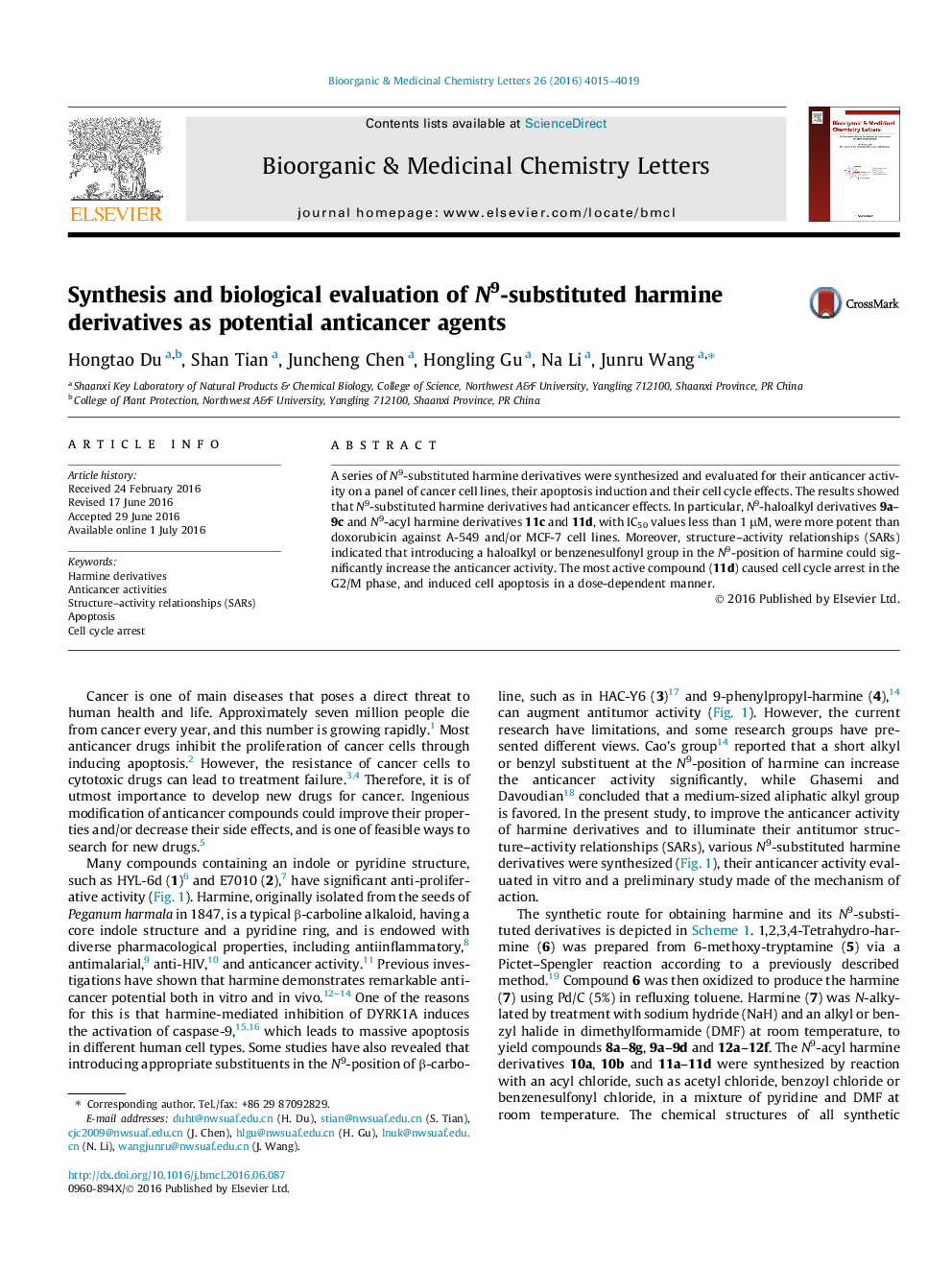| Article ID | Journal | Published Year | Pages | File Type |
|---|---|---|---|---|
| 1369738 | Bioorganic & Medicinal Chemistry Letters | 2016 | 5 Pages |
A series of N9-substituted harmine derivatives were synthesized and evaluated for their anticancer activity on a panel of cancer cell lines, their apoptosis induction and their cell cycle effects. The results showed that N9-substituted harmine derivatives had anticancer effects. In particular, N9-haloalkyl derivatives 9a–9c and N9-acyl harmine derivatives 11c and 11d, with IC50 values less than 1 μM, were more potent than doxorubicin against A-549 and/or MCF-7 cell lines. Moreover, structure–activity relationships (SARs) indicated that introducing a haloalkyl or benzenesulfonyl group in the N9-position of harmine could significantly increase the anticancer activity. The most active compound (11d) caused cell cycle arrest in the G2/M phase, and induced cell apoptosis in a dose-dependent manner.
Graphical abstractFigure optionsDownload full-size imageDownload as PowerPoint slide
